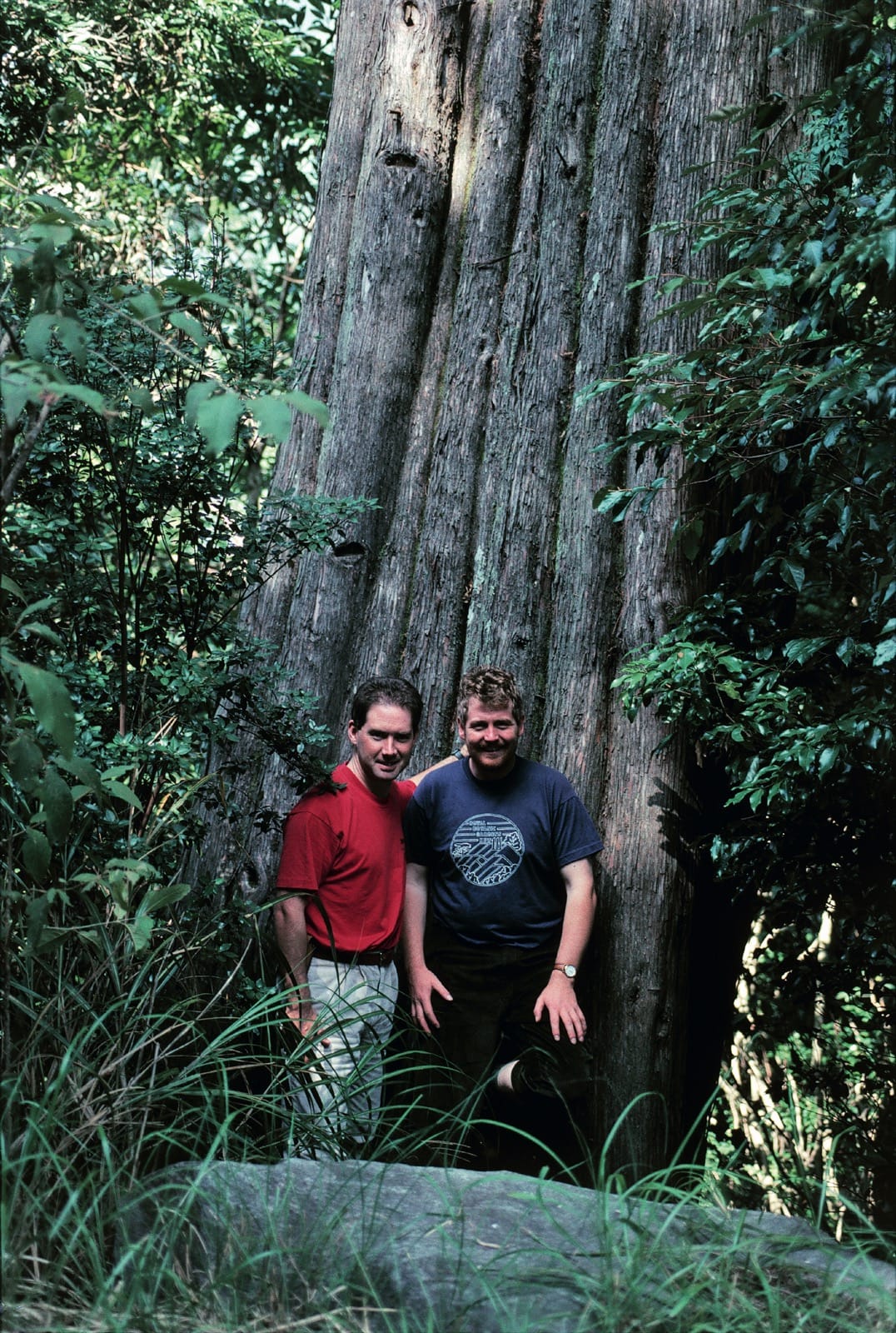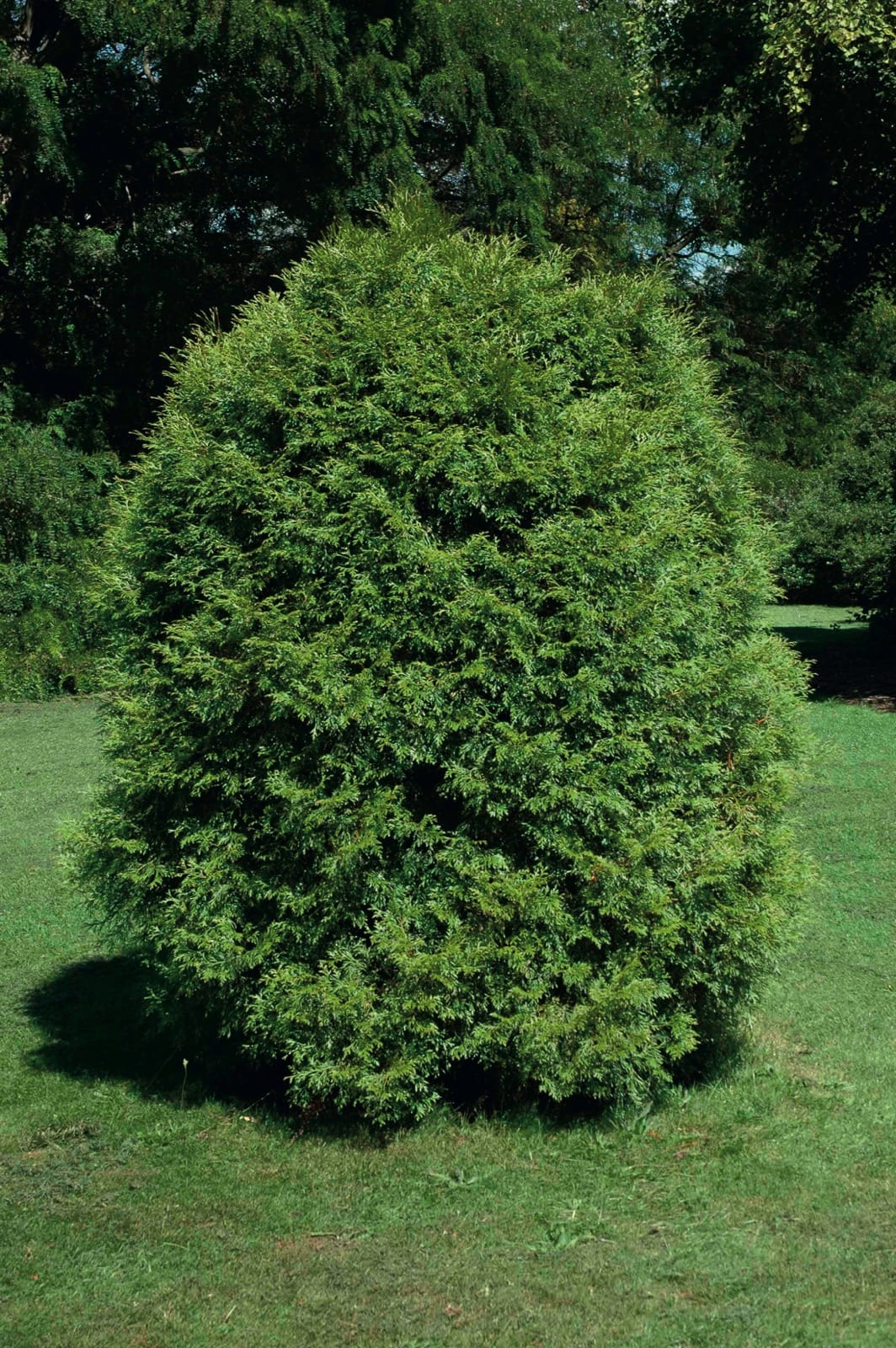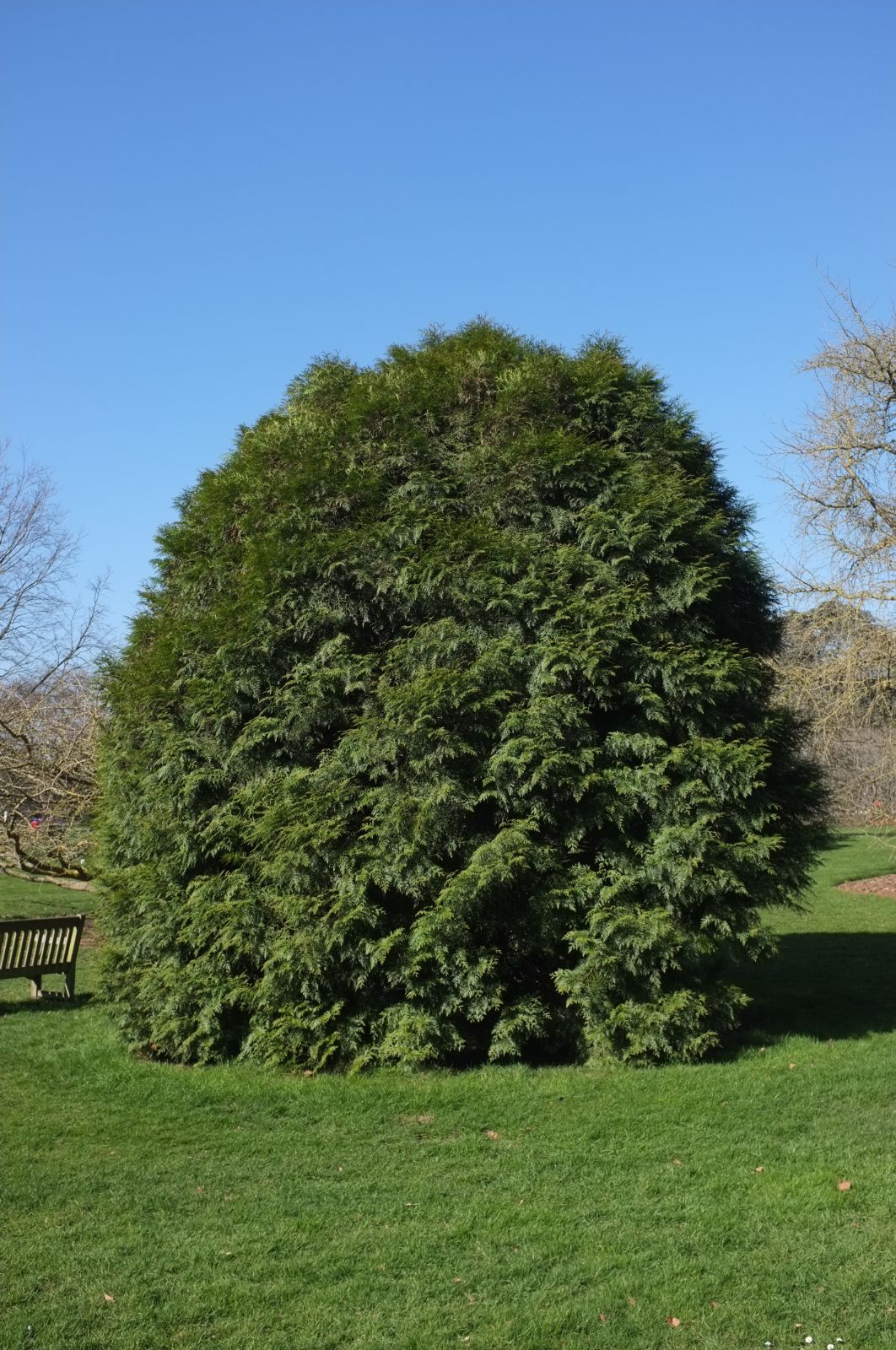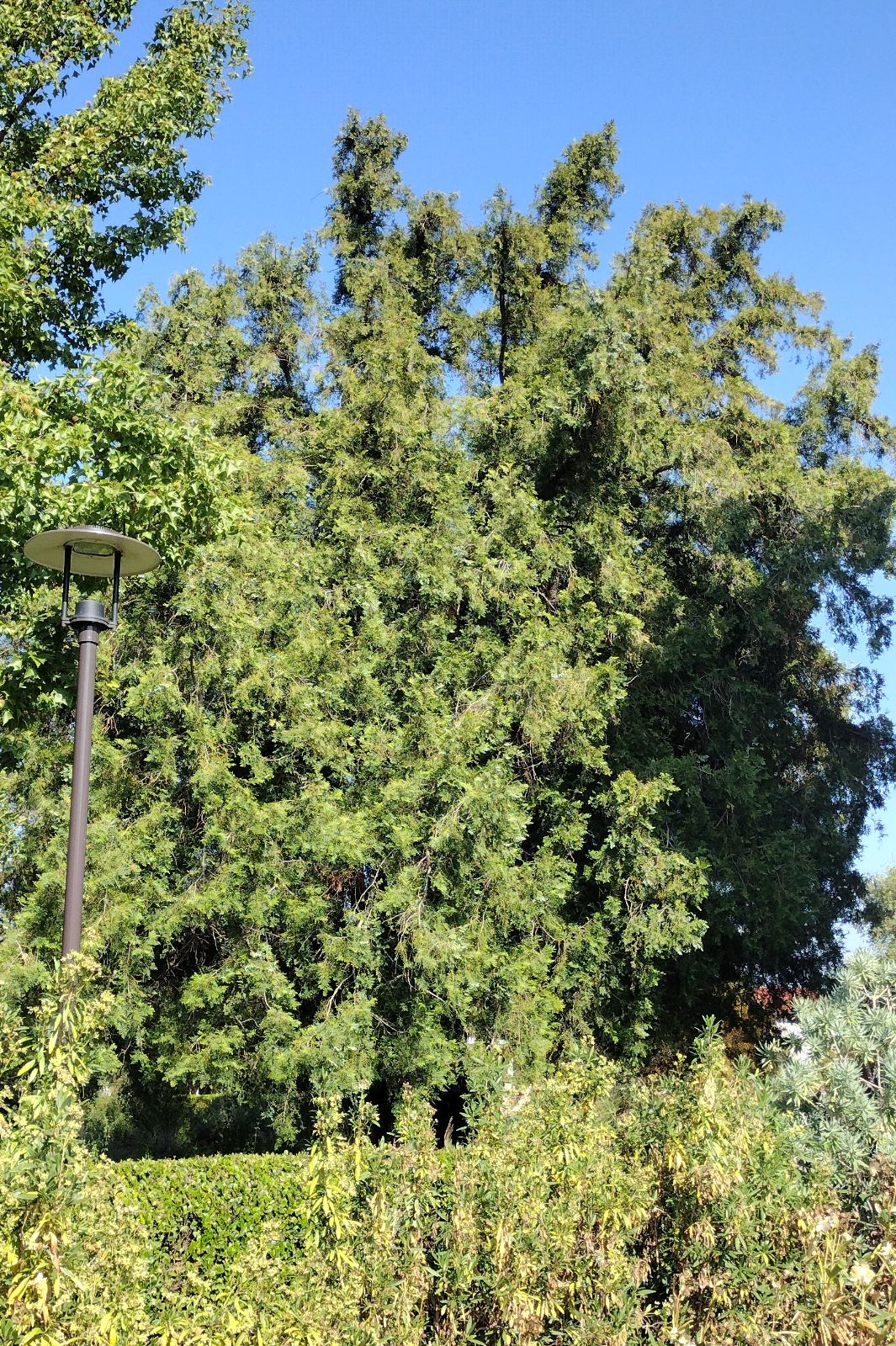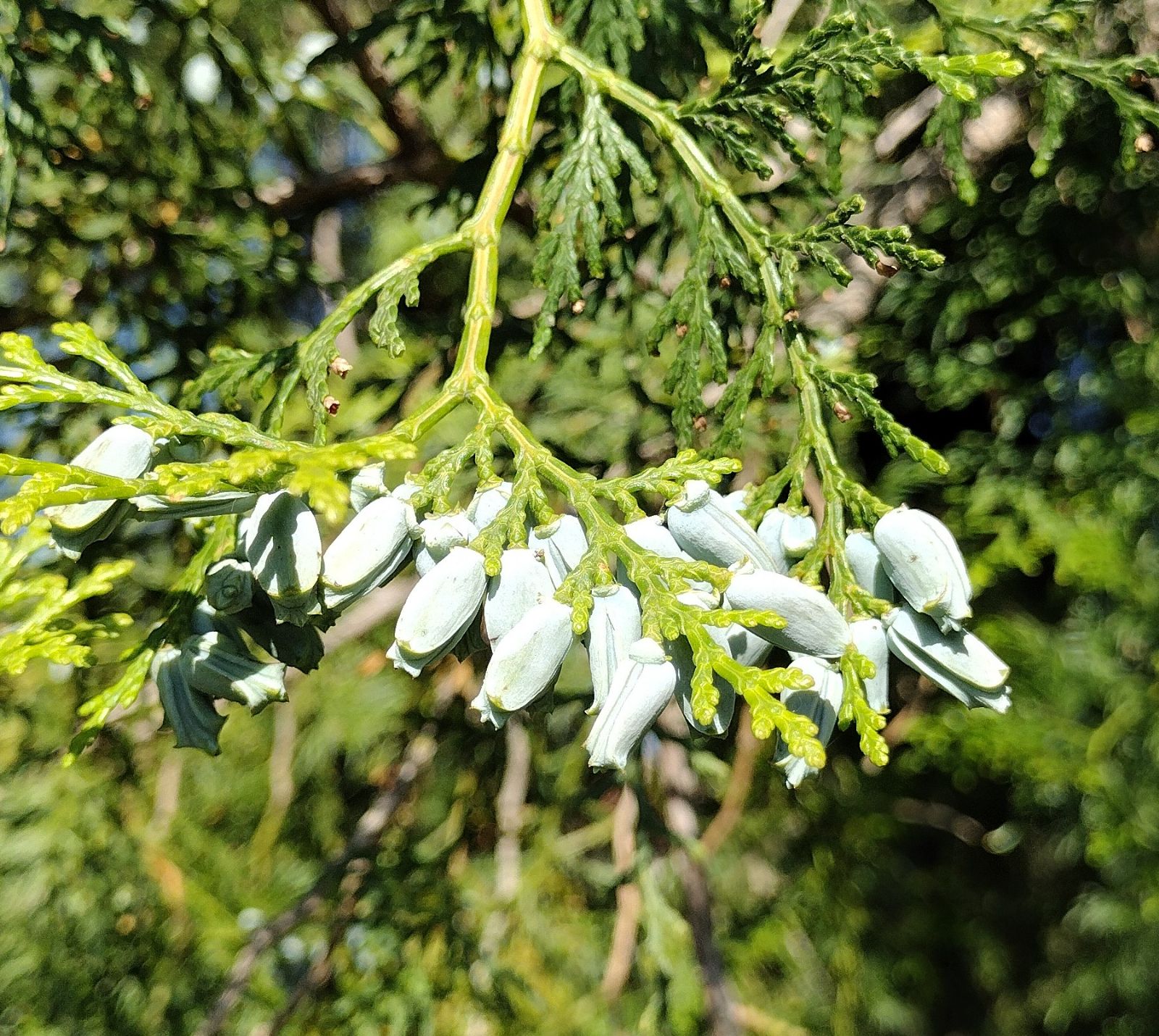Calocedrus formosana
Credits
Article from Bean's Trees and Shrubs Hardy in the British Isles
Article from New Trees by John Grimshaw & Ross Bayton
Recommended citation
'Calocedrus formosana' from the website Trees and Shrubs Online (treesandshrubsonline.
Genus
Synonyms
- Libocedrus formosana Florin
This species was introduced to Kew in 1980.
From New Trees
Calocedrus formosana (Florin) Florin
Taiwan Incense Cedar
Tree to 25 m, to 1.5 m dbh. Bark smooth, purplish to reddish brown, becoming fissured when older. Crown initially pyramidal, later broad and rounded. Branchlets numerous and drooping. Leaves obtuse, dark green on the outside, pale green inside, 1.5–2.5 mm long; the lateral pairs large, flattened, partially obscuring the facial pairs. Male strobili terminal, ovoid or oblong, 0.4–0.8 cm long, yellow. Seed cones solitary, oblong or ovoid, sometimes slightly curved, 1–1.5 × 0.4–0.6 cm, reddish brown, persistent after seed dispersal. Seed scales in two (rarely three) decussate pairs, valvate, only the middle scales fertile, distal scales much reduced in size, one to two seeds per scale. Seeds ovoid or ellipsoid, 0.5–0.6 cm; wings either long or short, 0.3–0.6 cm long. Li & Keng 1994c, Fu et al. 1999e, Farjon 2005c. Distribution TAIWAN. Habitat North- and east-facing slopes between 300 and 1900 m asl. This species is found on well-drained soil with moderate levels of organic matter. USDA Hardiness Zone 8. Conservation status Endangered. Illustration Li & Keng 1994c, Fu et al. 1999e, Flanagan & Kirkham 2005; NT187, NT187, NT246. Cross-reference B567 (as Libocedrus formosana), S130, K61. Taxonomic note This species is recognised only as C. macrolepis var. formosana (Florin) Kudô in Flora of China (Fu et al. 1999e). It can be differentiated from C. macrolepis by examination of the cone-bearing branchlets: in C. formosana they are flattened, while in C. macrolepis they are terete or four-angled – but this distinction is often difficult to observe.
Several recent expeditions to Taiwan have collected this taxon, and in consequence it has been planted quite widely. In the wild it is a large, if not always shapely tree, but it has yet to achieve more than a few metres in cultivation. An interesting account of collecting its seed is given by Flanagan and Kirkham (2005). A tree at Kew from their collection (ETOT 10) made at 1560 m in Taichung County, Taiwan in 1995, is doing well and is approximately 3.5 m tall. It has branched at the base to form three main stems. The shoots are much more ‘open’ than those of the familiar Calocedrus decurrens, giving them a fern-like look that is rather elegant. The younger shoots are also somewhat bronzed, which further adds to their appeal. A 2.2 m plant observed at Heronswood in 2005, grown from a Dan Hinkley collection, was in a shadier site, and here the younger growth was bright green. The species has been commercially distributed by Heronswood Nursery. Although not fully tested, its comparatively low altitudinal range suggests that it will perform best in the milder parts of our area.

